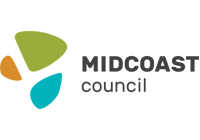MidCoast Council area
Sexes - Household type
In the MidCoast Council area, 29.9% females were in couples with children households.
The MidCoast Council area's household and family structure is one of the most important demographic indicators.
Household type is mainly a function of the type of people who live in an area – some areas, such as new housing growth areas, cater more to families, while some have young students, group households or retirees.
The extent to which household type varies by sex is relatively small. Typically, older lone persons are more likely to be female due to longer life expectancy. One-parent families nationwide are approximately 80% female parents, so areas with many one-parent families are likely to show fewer females in couple and other household types proportionally.
To get a clearer picture of the demographics of sexes in the region, Household Type data should be viewed in conjunction with Age Structure.
Derived from the Census question:
'What is the person's relationship (to each other person in the household)?'
Total female population counted in private dwellings
| Household type | ||||||||
|---|---|---|---|---|---|---|---|---|
| MidCoast Council area - Total females | 2021 | 2016 | Change | |||||
| Households by type | Number | % | New South Wales - Total females % | Number | % | New South Wales - Total females % | 2016 to 2021 | |
| Couples with children | 14,603 | 29.9 | 47.0 | 14,076 | 31.6 | 47.4 | +527 | 19500 |
| Couples without children | 14,629 | 30.0 | 20.2 | 12,977 | 29.1 | 19.5 | +1,652 | 19501 |
| One parent families | 7,595 | 15.6 | 13.8 | 7,150 | 16.0 | 13.9 | +445 | 19502 |
| Other families | 426 | 0.9 | 1.0 | 354 | 0.8 | 1.1 | +72 | 19503 |
| Group household | 1,169 | 2.4 | 2.9 | 1,044 | 2.3 | 3.2 | +125 | 19504 |
| Lone person | 7,143 | 14.6 | 10.6 | 6,325 | 14.2 | 9.9 | +818 | 19505 |
| Visitor only / Other non classifiable households | 3,210 | 6.6 | 4.4 | 2,682 | 6.0 | 5.0 | +528 | 19507 |
| Total persons counted in private dwellings | 48,775 | 100.0 | 100.0 | 44,608 | 100.0 | 100.0 | +4,167 | |
Source: Australian Bureau of Statistics, Census of Population and Housing (opens a new window) 2016 and 2021. Compiled and presented by .id (opens a new window)(informed decisions).

Compiled and presented by .id (informed decisions).

Compiled and presented by .id (informed decisions).
Dominant groups
Analysis of the household/family types of females in the MidCoast Council area in 2021 compared to New South Wales - Total females shows that there was a lower proportion of females in couple families with child(ren) as well as a higher proportion in one-parent families. Overall, 29.9% of females were in couple families with child(ren), and 15.6% were one-parent families, compared with 47.0% and 13.8% respectively for New South Wales - Total females.
There were a higher proportion of females in lone person households and a higher proportion in couples without children. Overall, the proportion of females in lone person households was 14.6% compared to 10.6% in New South Wales - Total females while the proportion in couples without children was 30.0% compared to 20.2% in New South Wales - Total females.
Emerging groups
The number of females in households in MidCoast Council area increased by 4,167 between 2016 and 2021.
The largest changes in the family/household types of females in the MidCoast Council area between 2016 and 2021 weres:
- Couples without children (+1,652 females)
- Lone person (+818 females)
- Visitor only / Other non classifiable households (+528 females)
- Couples with children (+527 females)
